A funny thing happened in the midst of a project I was working on. Well, not actually funny. More like typical.
I found myself drawn into a subset of the data and got all excited. Excited enough that I decided to share.
What you might not know about me is that I’m a huge fan of thrift store shopping. I love the hunt. Love vintage clothes. Love making unexpected things out of old stuff. In fact, I just made an iPad case out of mink that was left over from someone’s coat alterations; I added an old silk tie and a retro Bakelite buckle and voila!
The exploration, in this case, was about thrift stores. After sifting through a boatload of data, the topline for ‘things’ mentioned looked like this:
I know, you can barely read anything aside from clothes. Talk about an in-your-face majority, right? So I removed the word ‘clothes’ from the equation and it looked like:
Much more interesting. And because I absolutely love looking at data in word clouds, here is the cloud on actions from the data set:
And the cloud on descriptors:
Now, back to what I’ve been thinking as I stray from my real work.
Wouldn’t it be interesting to break out the vintage-related data to see what people are talking about. I know that I look for interesting dresses, clothes that can be altered in some way to make them current and unique, and raw materials for creative projects. Am I alone? Am I in line with the target audience for thrift stores? (Note that I am not making the assumption that vintage shoppers are the primary audience of thrift stores. I do, however, believe that this secondary audience is less price sensitive and almost cult-based, making it an interesting niche to explore.)
If you click on the pie, you can see the details. Basically, what it tells me is I’m not the only one looking for vintage dresses! And that skirts, coats, jewelry are the specific items called out the most next. What didn’t make it on to the pie are furniture and lamps – worthy of mention but much less so. Why? Non-clothing items are described as antique, retro, or used rather than vintage. That makes sense, right? And who calls their clothing antique? That just sounds wrong and musty.
Before I bore you to death, I have one more chart. The quantity of ‘clothing’ and ‘shopping’ mentions in the Thrift Store data set conversely changed fairly dramatically mid-quarter, the ‘vintage’ references were extremely stable with slight growth. Interesting, no? Perhaps this is pointing to another reason that this niche target is an interesting one. (And might I add that this is a 90% female audience, based on the definable mentions.)
So, there is a lot more to explore. And I could spend many more hours on this digression from client work!
~Wendy
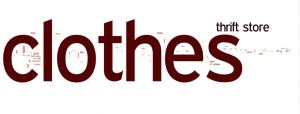
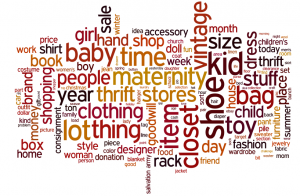
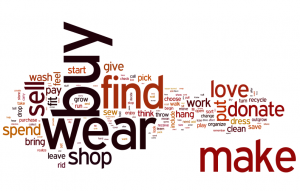
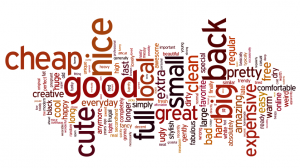
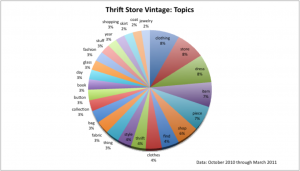
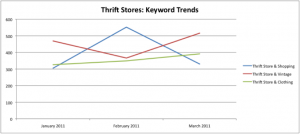
Leave a Reply